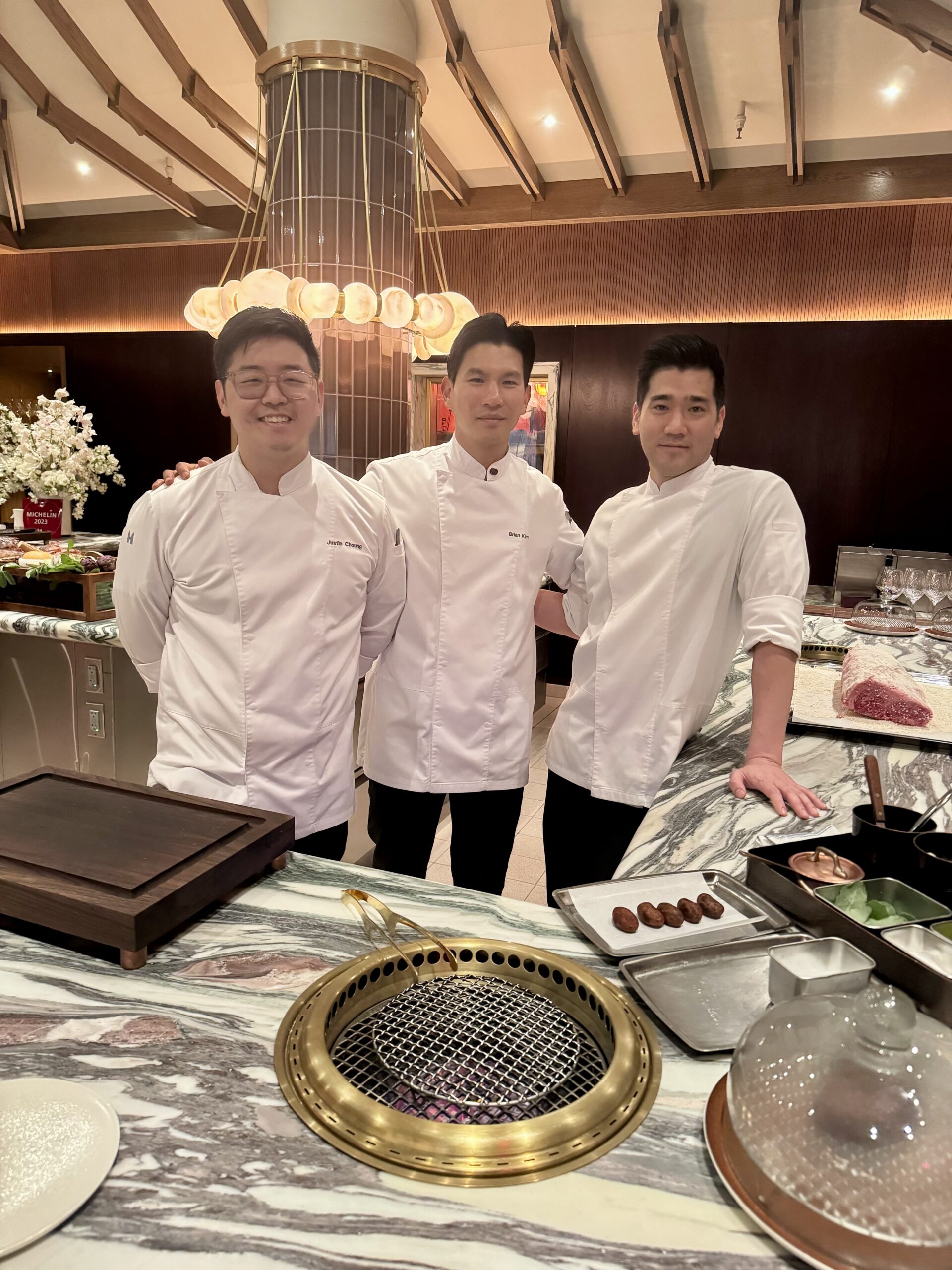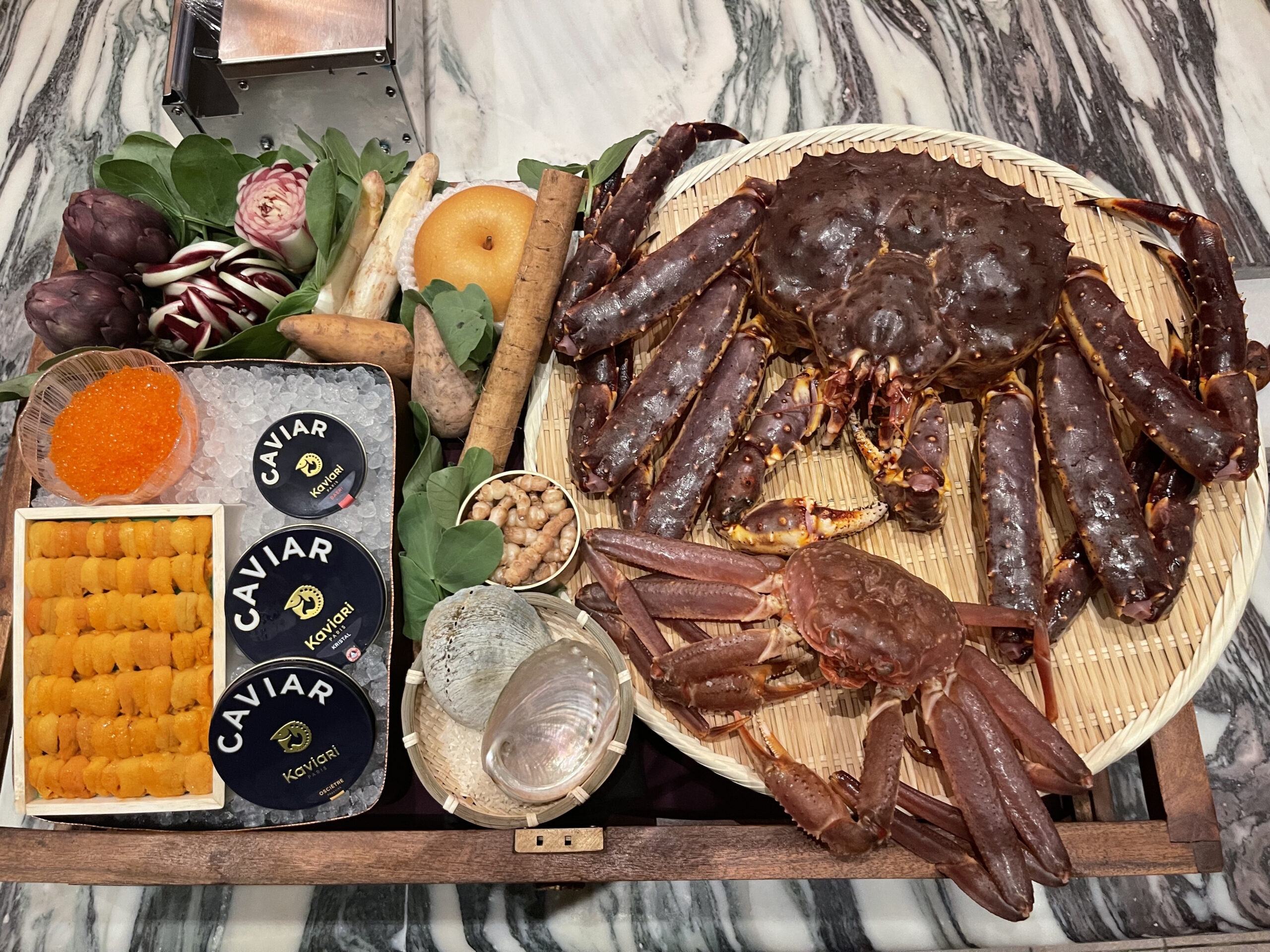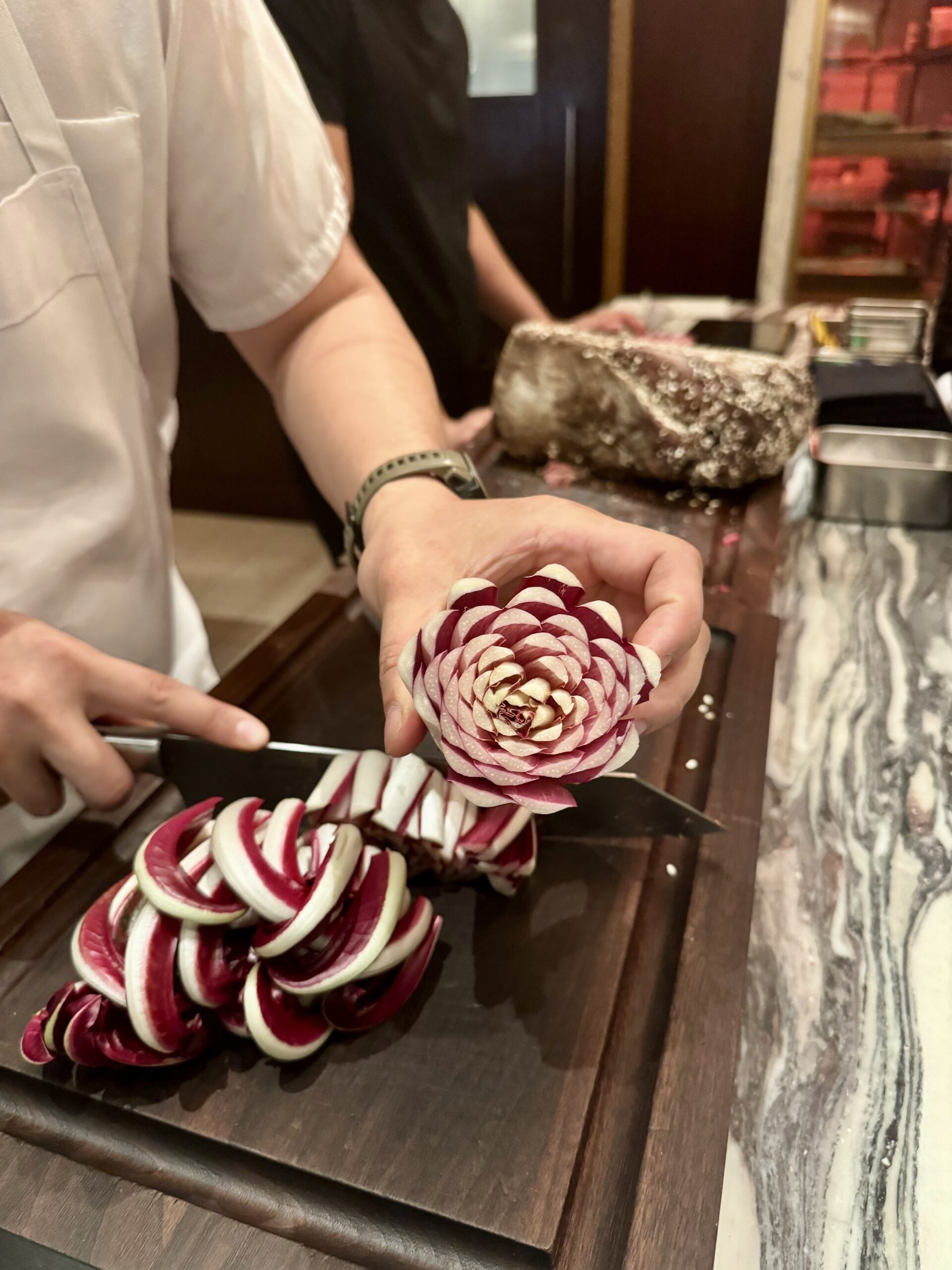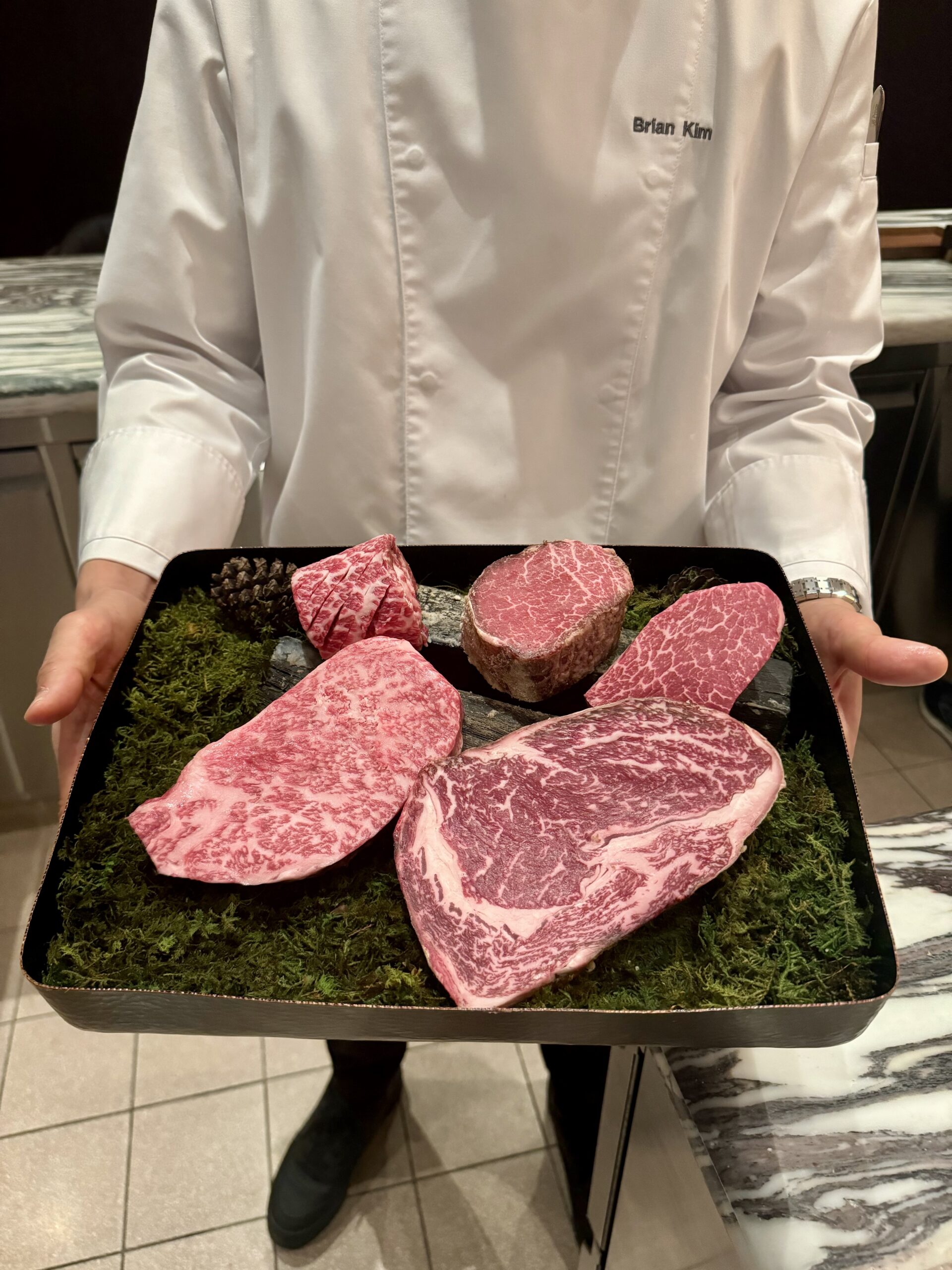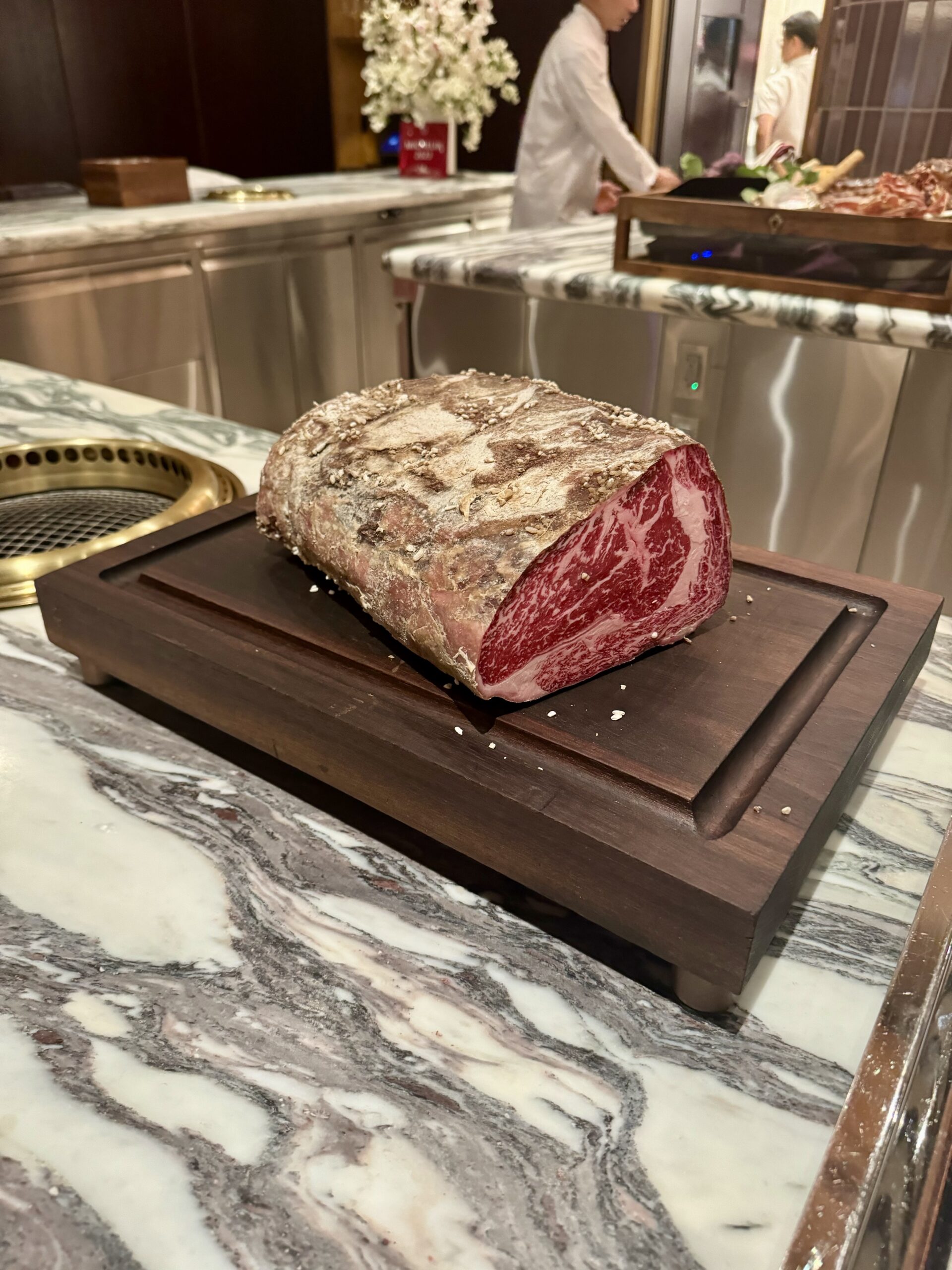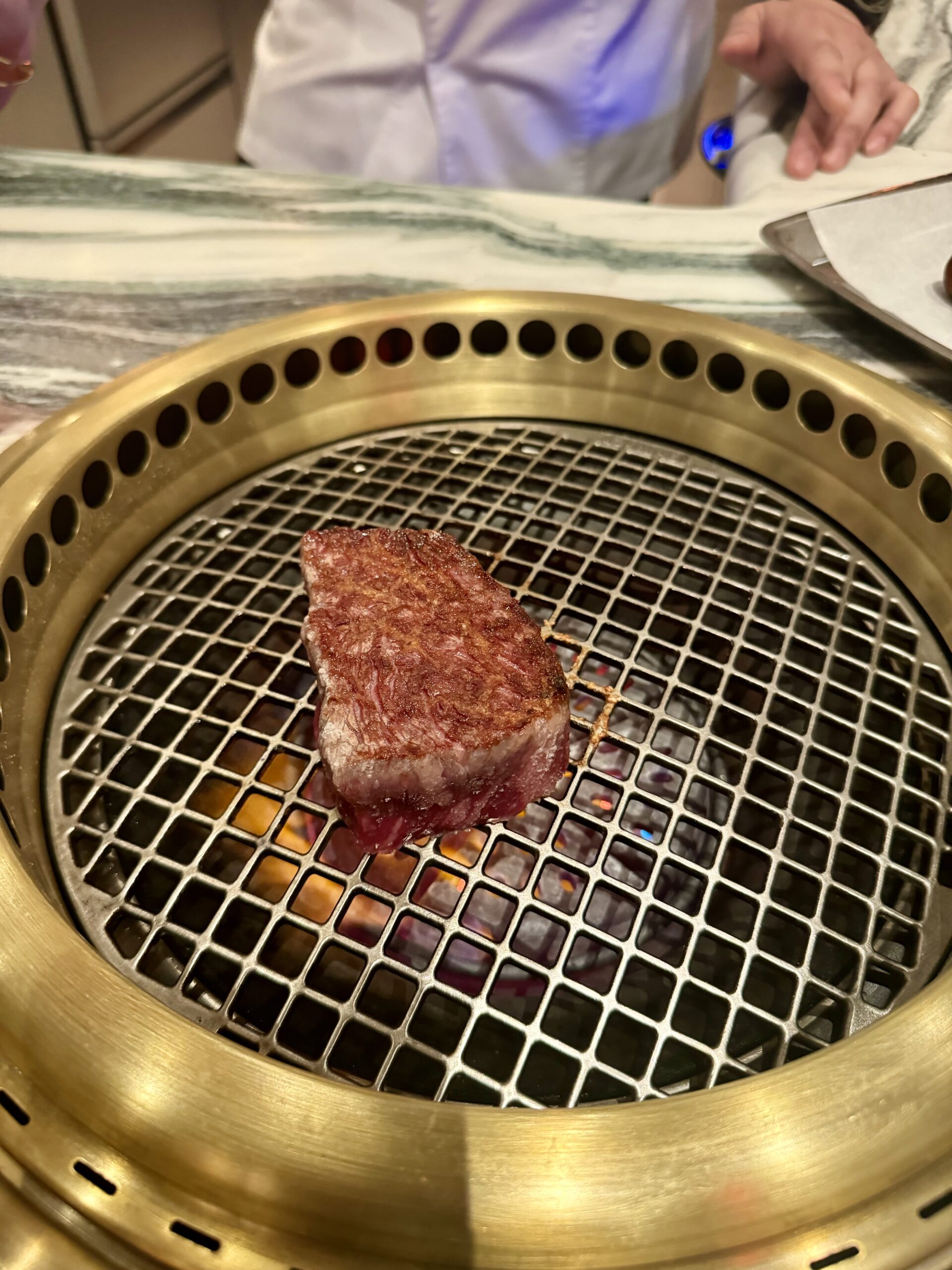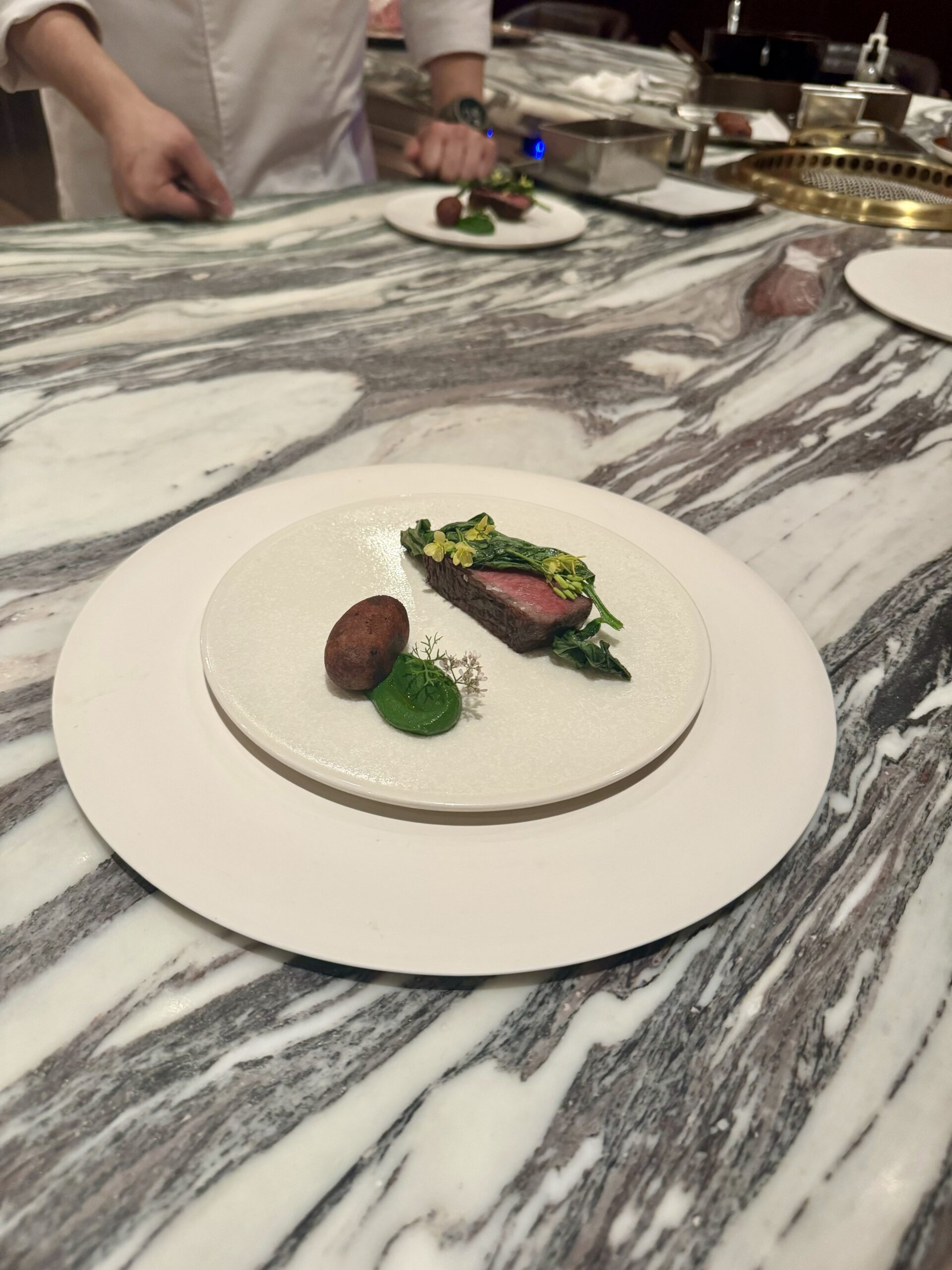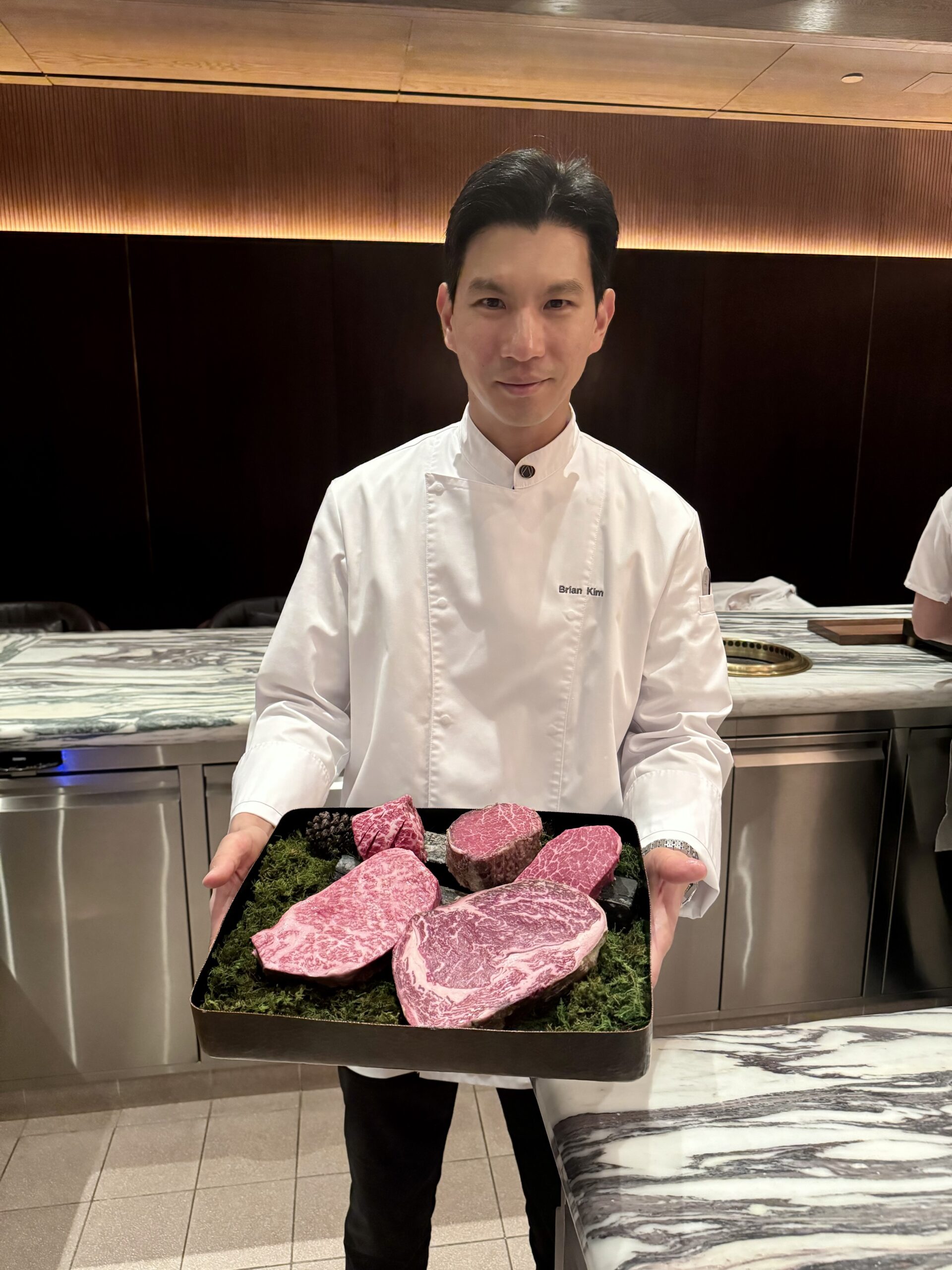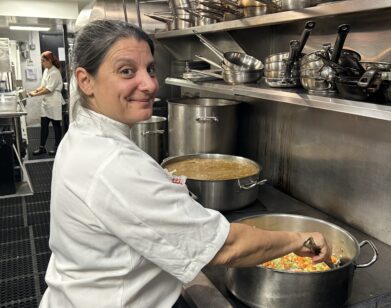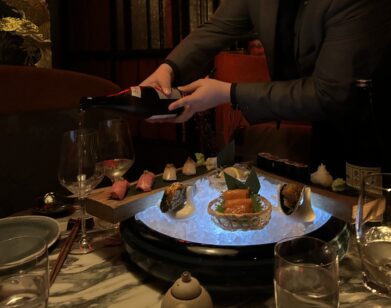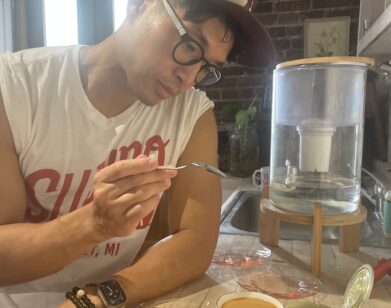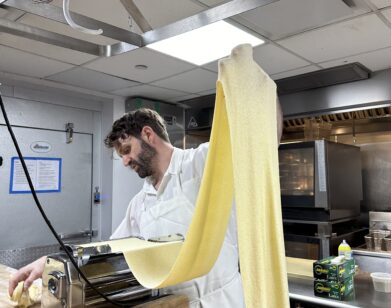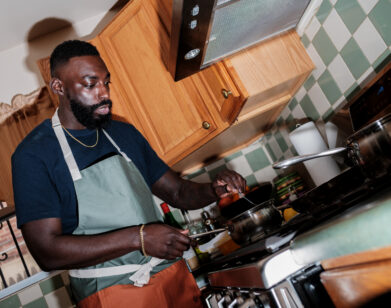LESSON
The Chefs at Bōm Give Us a Lesson in Fine Dining Korean-Style
“This is fine dining, but fun,” says chef Brian Kim, whose modern Korean restaurant Oiji Mi earned a Michelin star shortly after opening in Flatiron in 2022. Now, at the stylish, 17-seat, violet marble chef’s counter behind the restaurant is Bōm, an expansion of Kim’s decadent vision of Korean fine dining, where, for $325, guests, each assigned their own personal chef, can enjoy a 12-course prix fixe menu consisting of a variety of seafoods, meats, vegetables, and sweets prepared by pastry chef Celia Lee. The highlight, however, is Kim’s thirty-day dry-aged ribeye, cooked to perfection on the custom-made grills built into the countertop. Last month, the team at Bōm invited us to come by for beef tutorial and shared the secret to drying, fermenting, and cooking wagyu, Korean-style.
———
This is a rib-eye hybrid between Japanese wagyu and Australian wagyu. Normally, when people dry meat, there’s a couple of ways [to do it]: air dry, oven dry, and whiskey dry. But we wanted to create a unique, meaningful method. And because we’re a Korean restaurant, we wanted to use Asian-inspired techniques, so we ended up drying the meat with koji. Koji is a fermentation agent used in Japan or Korea to make sake or rice wine. It’s a very easy process, we just rub the meat with a good amount of koji, which has a little natural sweetness from the rice, a perkiness. We grind it a little bit for the yolk, so it sticks a lot better to the meat.
The idea came from dry-aging tenderloin. If you lose all the moisture, tenderloin will just become like beef jerky. But with koji, it actually seals the aging process. We dry-aged for seven to ten days without losing a lot of yield, and it has a proper funkiness and dryness. After we were successful with dry-aging tenderloin, we applied it to rib-eye, and we found that 21 days of dry-aging rib eye with koji is very important.
Here, it’s a very fine dining-style tasting menu course with premium ingredients, a lot of techniques, and a high standard of service, but people get to see a lot of performance. They can see how we finish a plate. In between meals, you can see a lot of interaction with the servers and chefs and the customers. So this is fine dining, but fun.
I visit everybody right in the beginning of the meal and give a preview of the menu so guests can get excited. It’s the best way to gauge the vibe of the room, like a visual amuse-bouche. We have the Norwegian snow crab, then we have a little bit of crones at their end of their season. We have burdock on the menu, Korean pear, and two different types of sweet potatoes: Hannah sweet potato and the Okinawa purple potato. We go to the extent of steaming them because we don’t want to dehydrate the potato, but we want the natural starchiness and the texture of the potato itself. We dice them and then lie to the guests and say, “This is a potato,” which is not technically true. It’s closer to a croquet. The flavors are very formal and traditional, but we use ingredients that are extremely atypical for Korean dining. On top of that, we use varieties of sweet potato and tardivo, a classic Italian chicory. It’s probably the most beautiful vegetable I’ve ever touched.
We take just as much inspiration from beyond the world of Korean food, which is why it’s really fun for my cooks to talk about these ingredients and hear people be like, “Oh, what is that?” It’s a good ice-breaker. That said, we don’t want to be too forward—we want to surprise them a little bit along the way.
We serve out 12 courses. For the first seven courses, we focus on seafood and vegetables, and the next three courses are going to be meat courses. We end with a Korean traditional meal, which consists of daily rice and daily soup with side dishes, then we finish with two desserts.
This is the meat we’re serving for the three main courses. The reason why we’re using a hybrid wagyu is because of the marbling contents. My favorite meat variety is Hanwoo, which is a Korean variety from Korean cows. But it’s illegal to import it to the US, so we came out with the hybrid, because we wanted to find marbling contents in between Japanese Wagyu and American Pride. We marinate this in a typical Korean method, like a galbi. Right now we’re using Miyazaki Wagyu because it’s the most consistent for us. But the most fun I’ve had recently was the Shinshu, because it’s a specific type of cow in Nagano that starts their life cycle eating only apples. The theory is that it gives you an apple flavor, though I don’t know if that’s true.
Of course, we want to make sure that it’s cooked to the right temperature, which is medium-rare. Sometimes when you cook it rare, you don’t get as much of the actually rendered fat in the steak itself, you don’t get to enjoy the peak soft texture of the steak. If the steak itself is not thoroughly cooked well, then the fat content is still congealed so it still doesn’t get as soft as it could be. Medium rare tends to allow all of the meat to settle, as well as the fat content, so everything is married together. Our biggest rule is, we want to make sure that the meat gets to the guest while it’s hot.
The optimal sear for a steak is a nice crust. The whole point of having it dry-aged is so that the moisture content in the steak itself evaporates and you have a little bit more of a crust, which has that flavor impact. The salt also helps. I’d say about five to ten minutes on the grill. And for garnish, we use seasonal greens, sometimes arugula or spring onion.
Another component is charcoal oil before, which I just thought was so unique that we just decided to bring it on with the steak. It ended up working really, really well. These are coriander blossoms, which tend to be pretty powerful, so just one little blossom goes a long way. Then we finish with a little Maldon salts and just a little bit of fava greens. We want to plate it as straightforward as we possibly can. Add a little bit of some mustard flour for a little kick. The puree itself is inspired by something that every single Korean person has had in their life growing up: it’s called sigeumchi-namul, which is a spinach salad. Oftentimes, if it’s served as banchan [side dishes], you would eat it with rice, or bibimbap, which is a rice dish.

